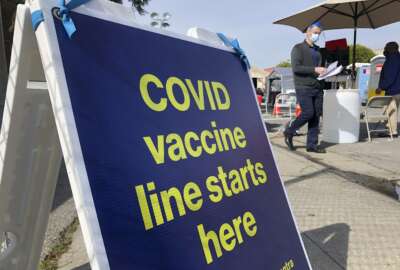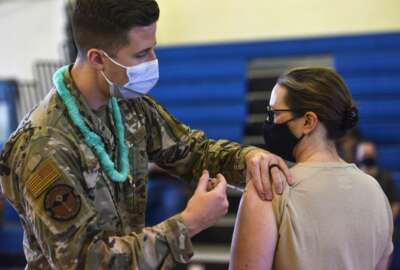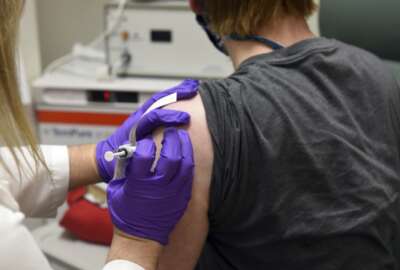
DoD expects full force vaccination by summer, more than 30% of troops refusing shot
The Defense Department cannot force service members to take the vaccine because it is under emergency-use authorization.
The Defense Department estimates that by mid- to late-summer it will have its service members vaccinated for coronavirus; however, a significant portion of the military population is declining to get the shot.
“This past week we vaccinated 170,000 members,” said Robert Salesses, who is performing the duties of assistant defense secretary for homeland defense and global security. “That includes military members, civilians, contract folks and obviously beneficiaries. This is a tiered approach. We’re focused on the frontline folks that need the vaccine to care for others.”
DoD said 1 million department-related vaccines will be issued by Friday.
Salesses told the House Armed Services Committee Wednesday that he expects full saturation by late July or August.
“We’re making great progress. As you know, the vaccine delivery for the whole country has picked up significantly. This past week it was 13 million doses. So, it’s picking up exponentially,” he said.
However, that vaccine saturation may not fully encompass the entire force. Brig. Gen. Dr. Paul Friedrichs, the Joint Staff surgeon, said refusal rates are as high as 33% among service members. That number is one the Pentagon has been dodgy about since vaccinations started on Dec. 14.
“It is a voluntary vaccine,” Pentagon spokesman John Kirby said last week. “There is no central tracking system to keep track of those who are either refusing the vaccine or deferring their decision on the vaccine. I don’t think we are going to be in a place where we can give you an exact number of refusals.”
Friedrichs noted that the refusal rate is about the same in the general population. A recent Gallup poll suggested that 63% of citizens were willing to get the shot at this point.
The military can’t force service members to get the vaccine because it was approved under emergency-use authorization.
“We believe that the vaccine is the right thing to do,” said Maj Gen. Jeff Taliaferro, vice director for operations for the Joint Chiefs of Staff. “It’s clearly safe for service members, and we need to continue to educate our force and help them understand the benefits and ensure there’s leadership involvement in the discussion of the benefits of the vaccine.”
As of Monday, more than 150,000 service members have been diagnosed with the disease and about 46,000 are currently infected.
Maj. Gen. Steven Nordhaus, National Guard Bureau director of operations, said the National Guard should be able to remain ready even if there is a portion of people who do not get the vaccine. That is because DoD has already figured out how to resume operations in a COVID environment. However, working in that environment can be more costly than working in a vaccinated environment.
“We worked flexibly and adaptably to make sure that our service members have one way or another gotten the training they need to be ready and to deploy,” Nordhaus said. “They’ve been very successful with that. And to this date, we’re able to meet all current and future projected deployments for the National Guard.”
As for the general roll out of the vaccine, DoD is providing active duty troops and tens of thousands of National Guard members.
“The Defense Department is obviously helping with these mega and large centers,” Salesses said. “At the same time, there’s about 30,000 centers identified across the nation with state and local authorities in charge. As the vaccine becomes more readily available it will be coming, obviously, in greater quantities. Yesterday we did 1.6 million doses in arms around the country.”
The United States expects 100 million more vaccines delivered from Moderna and Pfizer by the end of March. Another batch of 100 million will come in around the May timeframe and a third at the end of July.
Copyright © 2025 Federal News Network. All rights reserved. This website is not intended for users located within the European Economic Area.
Scott Maucione is a defense reporter for Federal News Network and reports on human capital, workforce and the Defense Department at-large.
Follow @smaucioneWFED
Related Stories






